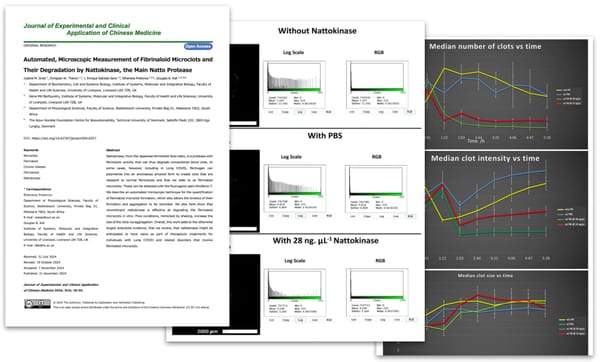Manufactured Disorder To Enable Permanent Control | Los Angeles Chaos | Problem — Reaction — Police State

TheNewAmerican.com | Veronika Kyrylenko
Los Angeles is once again on fire. Protests, arrests, and violent clashes with law enforcement have erupted following a federal crackdown on illegal immigration. In response, and without invitation from local officials, the Trump administration federalized the California National Guard, raising constitutional concerns and appearing to further inflame the unrest.
But scratch beneath the surface, and this is neither an organic uprising nor a lawful resolution. What we are witnessing appears to be a carefully orchestrated sequence — a textbook “problem-reaction-solution” cycle designed to usher in the next phase of authoritarian governance.
Problem: Manufacturing Crisis
The unrest in Los Angeles stems from policies deliberately designed to shield illegal immigration and undermine enforcement. Under S.B. 54, the California Values Act, state and local law enforcement are barred from cooperating with the U.S. Immigration and Customs Enforcement (ICE) except in serious felony cases. California has also extended a wide range of taxpayer-funded benefits to undocumented immigrants, including Medi-Cal, food assistance, in-state tuition, and tax credits.
These incentives have created an ecosystem where illegal immigration thrives and enforcement becomes politically radioactive.
Instrumental in this infrastructure is CHIRLA (Coalition for Humane Immigrant Rights). Though technically a nonprofit, CHIRLA acts as a political advocacy group. The coalition is “is one of the key players in fomenting the violent response to immigration enforcement actions” this weekend, according to attorney Laura Powell.
Despite its openly political activities, CHIRLA is heavily funded by taxpayers. For the fiscal year ending June 2023, it received $34 million from the state of California. In 2023, CHIRLA also secured a $450,000 federal contract, which was canceled in 2024, per Powell.
CHIRLA maintains deep ties to the Democratic Party, organized labor, and top officials like Mayor Karen Bass. It plays a key role in the state’s broader sanctuary framework — a system that funds political activism under the banner of social justice.
The Spark: Protests Against the ICE Raids
The unrest began on Friday, when Immigration and Customs Enforcement (ICE) launched a series of aggressive, military-style raids across Los Angeles, targeting day-labor sites, retail stores, and residential areas. Over 40 individuals were arrested in a single day. Videos of agents in riot gear using smoke bombs, tear gas, and flash-bangs quickly spread online, sparking outrage.
CHIRLA’s executive director, Angelica Salas, condemned the raids, calling them a campaign of terror.
The injury and arrest of Service Employees International Union (SEIU) California President David Huerta during one of the raids further inflamed tensions. Charged with obstruction, his detention triggered an immediate rally outside the Metropolitan Detention Center.
By nightfall, protests had intensified. Demonstrators blocked freeways, torched vehicles, and clashed with police in areas including Westlake, Paramount, and Compton. Over a dozen people were arrested and charged with impeding ICE agents. City officials refused to label the unrest a crisis.
Reaction: Federalization of California’s Guard
On Saturday, Trump announced the federalization of the California National Guard, ordering 2,000 troops to the city without the state’s consent. Trump said in a memo to the Secretary of Defense, Attorney General, and Secretary of Homeland Security:
To the extent that protests or acts of violence directly inhibit the execution of the laws, they constitute a form of rebellion against the authority of the Government of the United States.
The memo indicated that Trump, through his Secretary of Defense Pete Hegseth, reserved the option to deploy regular Armed Forces as well — at any scale he deemed necessary — to protect federal property and operations, without limitation or coordination with state authorities.
Trump’s move was authorized under Title 10 of the U.S. Code, apparently sidestepping the Posse Comitatus Act, which strictly limits the domestic use of federal troops. The act prohibits the military from acting “as a posse comitatus or otherwise execut[ing] the laws” unless such action is expressly authorized by Congress or the Constitution.
Legal experts immediately raised concerns, calling the deployment unprecedented since the administration had not coordinated with the state. Governor Gavin Newsom and Mayor Bass had not requested federal assistance, and both condemned the move as unlawful and inflammatory. On Sunday, Newsom announced he would sue the Trump administration over the deployment, citing a violation of state sovereignty and constitutional limits on federal power.
Escalation
By Sunday, National Guard troops began arriving across Los Angeles, establishing a visible federal presence around government buildings and key intersections. Clad in riot gear, they fanned out across the city just as riots intensified. Protesters blocked the 101 Freeway, torched more vehicles, and clashed with police using rocks, fireworks, and Molotov cocktails.
Law enforcement responded with tear gas, rubber bullets, and flash-bangs, declaring multiple unlawful assemblies. The deployment of the National Guard, far from calming tensions, appeared to accelerate confrontations on the ground.
Solution: High-tech Policing?
Aside from the apparent erosion of state sovereignty, the developments reveal another troubling reality. Federal ICE operations and Los Angeles Police Department (LAPD) tactics are increasingly aligned — building surveillance infrastructure under the pretense of public safety. While California officials publicly condemned the National Guard deployment, their own law enforcement agencies appear to be fully aligned with the federal architecture that enables it.
The LAPD continues to rely on Palantir’s predictive policing tools, feeding arrest records, field interviews, and license-plate data into real-time surveillance systems. Additionally, in April, ICE contracted Palantir to build “ImmigrationOS,” a platform that integrates biometric tracking, field data, and behavioral analytics into one seamless enforcement engine.
This quiet fusion of federal and local systems is laying the foundation for a fully integrated digital policing regime. But the shift is not just digital — it is physical.
In recent months, robotic police dogs have made their debut on Los Angeles streets, with the LAPD deploying Boston Dynamics’ “Spot” units for SWAT and tactical operations. Equipped with cameras and communication tools, these machines are labeled “non-lethal” and limited in use. But crisis logic tends to expand boundaries — what starts as specialized soon becomes routine.
Over the protest weekend, unconfirmed reports claimed robotic dogs were seen alongside riot police. While not verified, the rumor alone reflects how easily these tools could become part of the new normal.
Protests Expanding
While Los Angeles remained the flashpoint, the unrest quickly spread. In San Francisco, protesters surrounded an ICE facility. Dozens were arrested, and several were injured. Chicago, Portland, and Salt Lake City saw rallies demanding Huerta’s release and an end to federal raids.
In New York, over 100 activists attempted to block ICE vans outside the U.S. Immigration Court on Saturday. Local police responded with pepper spray, arresting at least nine.
Though less intense than in L.A., these protests signaled that the conflict had gone national, laying the groundwork for broader federal intervention.
False Flags and the Next Phase of Control
The Los Angeles protests and ensuing crackdown follow a familiar pattern: A problem is manufactured, public outrage ensues, and a centralized “solution” is imposed. This is the Hegelian dialectic played out on a national stage.
The dominant narrative casts illegal immigration as a crisis created by the “Left” and countered by the “Right.” But this dichotomy is oversimplified and misleading. While “progressive” politicians and nonprofits enable the conditions for chaos, the so-called “conservative” response often serves to legitimize unconstitutional solutions — military deployment, surveillance infrastructure, and federal control.
It is not law and order. It is managed destabilization, designed to justify outcomes the public would otherwise reject.
President Dwight Eisenhower famously warned of the military-industrial complex. Today, that model has expanded: A nonprofit-industrial complex manufactures the crisis, and a security-industrial complex delivers the “solution.” The result is not safety — it is soft authoritarianism with bipartisan cover.
Patriots must recognize the script. The question is no longer whether this is happening — it is whether we will continue to accept it.
Manufactured disorder is the gateway drug to permanent control.
Original Article: https://thenewamerican.com/us/immigration/los-angeles-chaos-problem-reaction-police-state/
Related:
L.A. California 2025




Comments ()